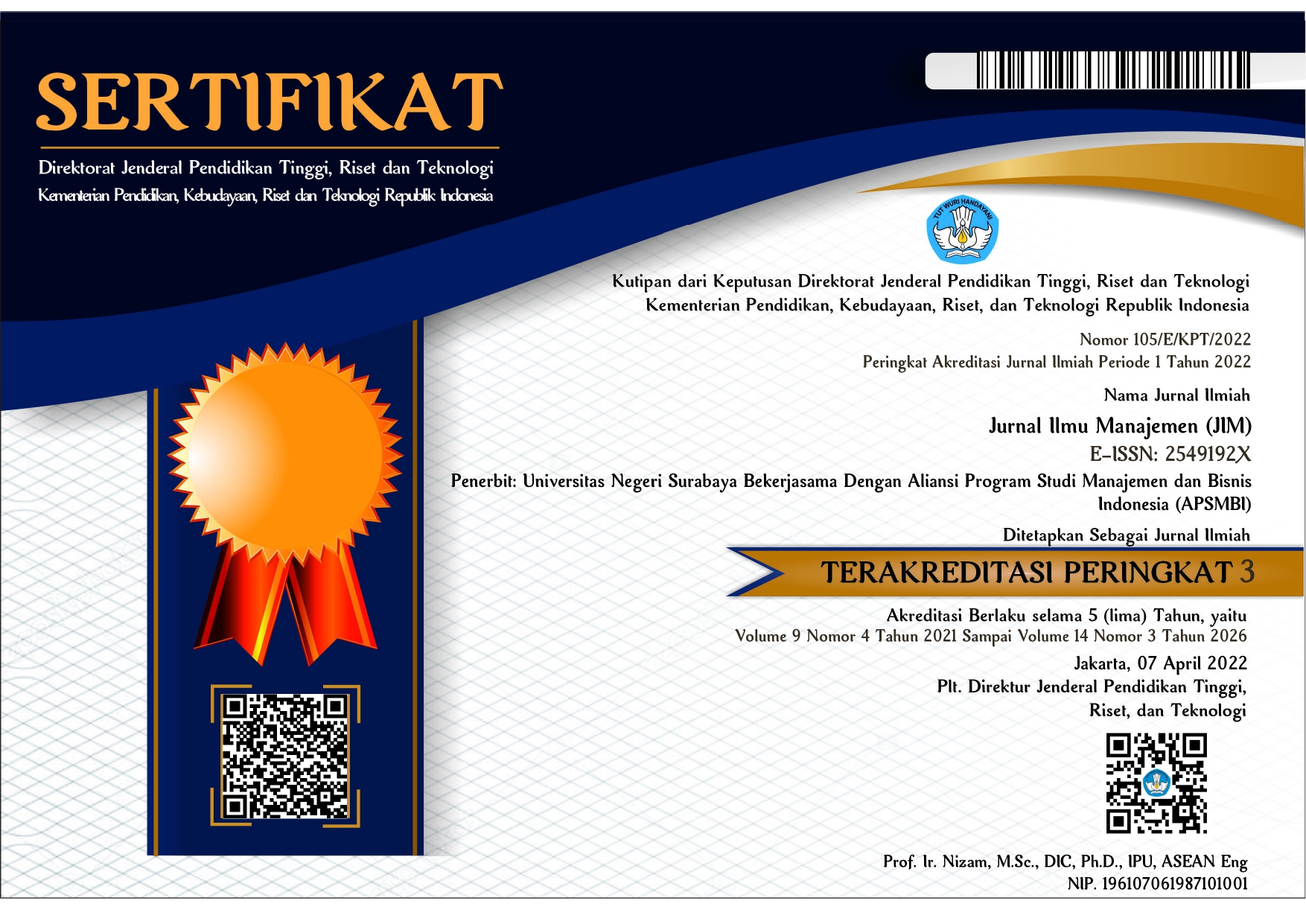Peran intention to use dalam meningkatkan loyalitas penggunaan financial technologi pada generasi XYZ di Indonesia
DOI:
https://doi.org/10.26740/jim.v11n1.p211-221Keywords:
data security and privacy, intention to adopt fintech, loyalty to use fintech, perceived of usefulness, quality and administrative serviceAbstract
Currently, there is a significant increase in users of financial technology. Financial technology is applied to payment systems and banking transactions. This research focuses on financial technology that is used in the payment system. The public's need for financial technology in the payment system has increased since the Covid-19 pandemic. Along with restrictions on community activities in Indonesia, many actions must be carried out online using technology. This study examines the factors that influence the perceived usefulness of financial technology. By looking at this factor, companies can find out what factors encourage users to continue using financial technology for a long time. For example, when the Covid-19 pandemic is over, users continue to use financial technology services because they find it easy to make transactions. Besides that, companies must know the factors that encourage users to entrust their payment activities using financial technology services to increase competitive advantage. These factors include trust, data security and privacy, quality of administrative services, perceived usefulness, and intention to adopt fintech. This research is quantitative by using Structural Equation Model (SEM). Research data was obtained by distributing questionnaires. The result of this research is that perceived usefulness and intention to adopt fintech influence significantly and directly to loyalty to use fintech.
References
Byrnes, S., (2020). Can Consumer Data Privacy Coexist with How Businesses Want to Use Data? Forbes. Retrived 1 January 2021 from https://www.forbes.com/sites/forbestechcouncil/2020/04/27/can-consumer-data-privacy-coexist-with-how-businesses-want-to-use-data/?sh=f6ca29928180.
Hu, Z., Ding, S., Li, S., Chen, L., Yang, S., (2019). Adoption intention of fintech services for bank users: an empirical examination with an extended technology acceptance model. Symmetry, 11(3), 340.
Jung, J.-H., Shin, J.-I., (2019). The effect of choice attributes of internet specialized banks on integrated loyalty: the moderating effect of gender. Sustainability, 11(24), 7063.
Kauflin, J., (2020). The 10 Biggest Fintech Companies in America 2020. Forbes. Retrived 1 January 2021 from https://www.forbes.com/sites/jeffkauflin/2020/02/12/the-10-biggest-fintech-companies-in-america-2020/
Le, Min, T.H, (2021). Examining factors that boost intention and loyalty to use Fintech post-COVID-19 lockdown as a new normal behavior. Retrived 1 December 2021 from https://www.cell.com/heliyon/fulltext/S2405-8440(21)01924-1.
Salz, P.A., (2020). Mobile Marketing Experts Show How Fintech Apps Will Emerge Fighting Fit from the Covid-19 Crisis. Forbes. Retrived 1 December 2021 from https://www.forbes.com/sites/peggyannesalz/2020/05/04/mobile-marketingexperts-show-how-fintech-apps-will-emerge-fighting-fit-from-the-covid-19-crisis/#4136976c4d50.
Schein, E.G. (2009). The Corporate Culture Survival Guide. San Fransisco, CA: John Wiley & Sons.
Statista, (2019). Number of mobile Phone Users Worldwide from 2015 to 2020. Retrived 1 December 2021 from https://www.statista.com/statistics/274774/forecast-of-mobile-phone-users-worldwide/
Downloads
Published
How to Cite
Issue
Section
License

This work is licensed under a Creative Commons Attribution-NonCommercial 4.0 International License.
 Abstract views: 752
,
Abstract views: 752
, PDF Downloads: 563
PDF Downloads: 563










